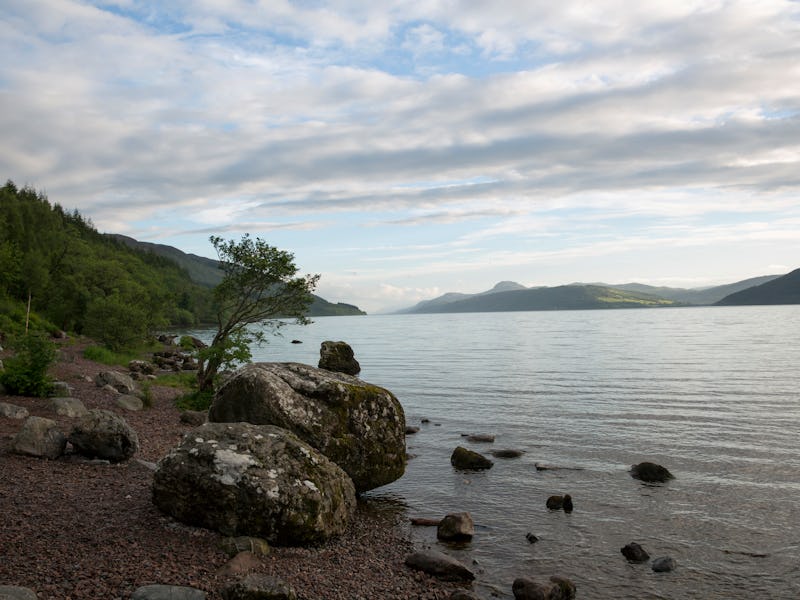This New Photo of the 'Loch Ness Monster' is B.S.
You're seeing what you want to see.

Ian Bremmer was skimming along Loch Ness on Saturday afternoon with his camera when the amateur photographer snapped up a photo that’s got the rumor mills swirling that finally, there’s definitive, photographic proof of the Loch Ness monster.
But is it real?
Once upon a time, it might have been within the realm of reality to think a gigantic-ass reptilian monster lurked within the depths of a Scottish lake. But despite the Industrial Revolution and the invention of the internet and scientific reasoning, the Loch Ness monster somehow survives.
And it’s not the first time some image has been presented as “evidence” of the infamous beast. A mysterious “water monster” was described by Saint Columba all the way back in the sixth century, but the cryptid didn’t make another appearance until the late 1800s. Grainy photos of strange shapes (and elaborate hoaxes) in the Scottish lake have cropped up since the 1930s, but the clearest photo yet of what may be Nessie was (maybe) taken last weekend.
Bremmer didn’t even immediately notice something off about his photos. It wasn’t until he got home that he noticed three smooth humps protruding from the water amidst splashing.
Seals or Nessie?
Seems indisputable, but hold your horses there: those humps could be a myriad of things. For one, they could simply be three seals or a group of otters. Both marine mammals can be found in the lake, and it’s definitely possible these are just a few frolicking seals. They could also be three splashing salmon, which are also found in the lake.
It could be our minds playing tricks on us, too, a case of wishful thinking gone wild. Psychologists have found that believing in cryptids can prime people so they see normal, explainable phenomena as evidence of mysterious creatures. In other words, people who believe in cryptids like Nessie have a hefty dose of confirmation bias. Weird thing in the water? Must be Nessie, other evidence be damned.
The shape of Loch Ness might also be contributing to all the alleged Nessie sightings over the years. The lake is about 22 miles long, and narrow at nearly two miles wide. Wakes generated by boats bounce off the sides of the lake, and then encounter other waves, leading to choppier water. Even on the clearest day, the surface of Loch Ness is barely calm. FWIW, the Saturday afternoon that Bremmer shot his photo was a partly cloudy one, with 18 mph winds.
Perhaps this is the most damning point of all: Despite all the sightings and photographs, there is still a complete lack of physical evidence pointing to Nessie’s existence. A dead Nessie has never washed ashore, and a live Nessie has never been captured. All that’s turned up when divers have scoured the bottom was a 1970s movie prop and some logs. In order for there to be any Nessies at all, there also needs to be more than one. But scientists doubt the lake would be large enough to support a breeding population of an animal as large as the one people have described.
So sorry, Nessie truthers: That new photo, while definitely a pretty sharp one, is definitely not proof the Loch Ness Monster exists.